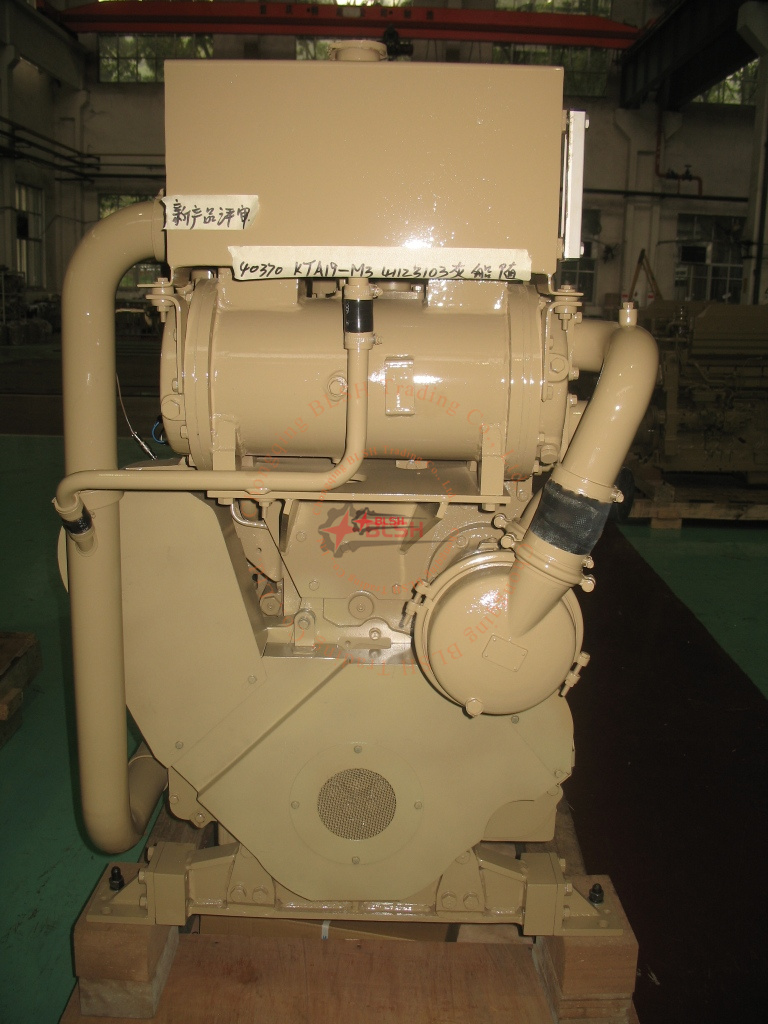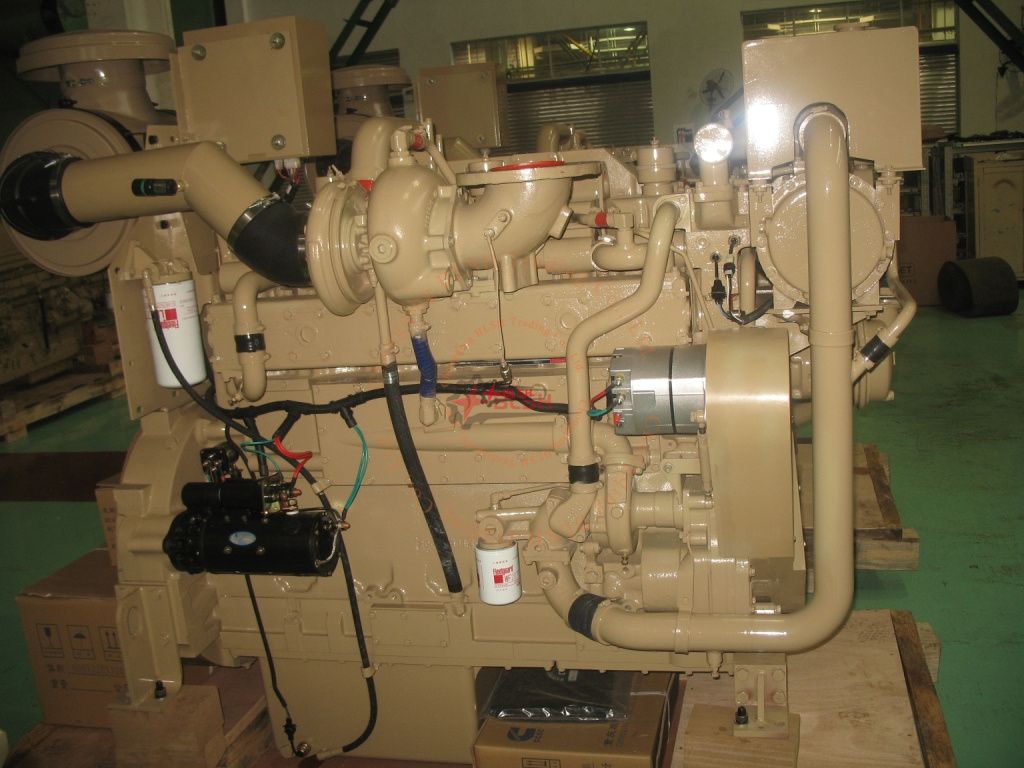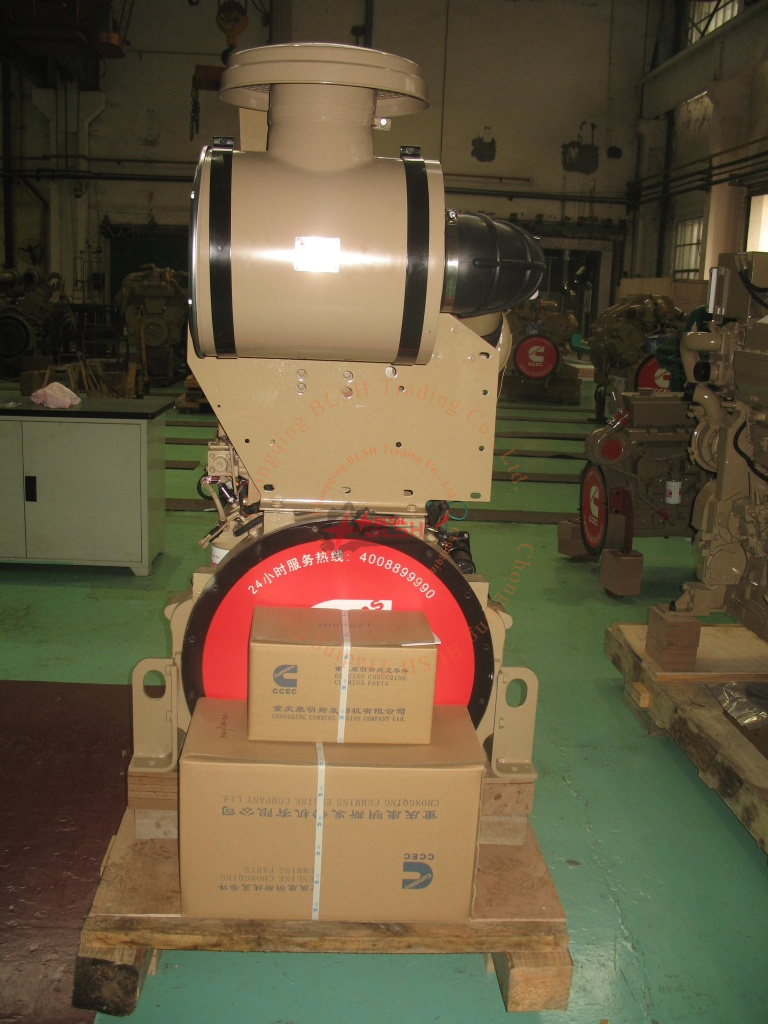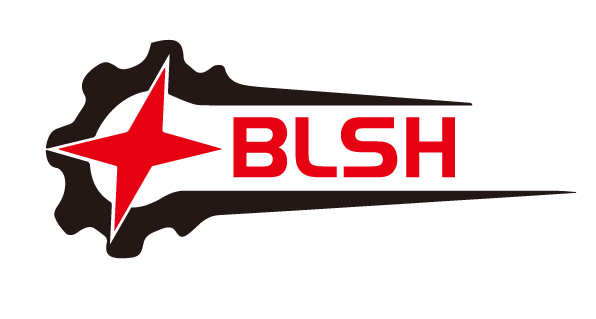CCEC KTA19 – M425 Marine Engine
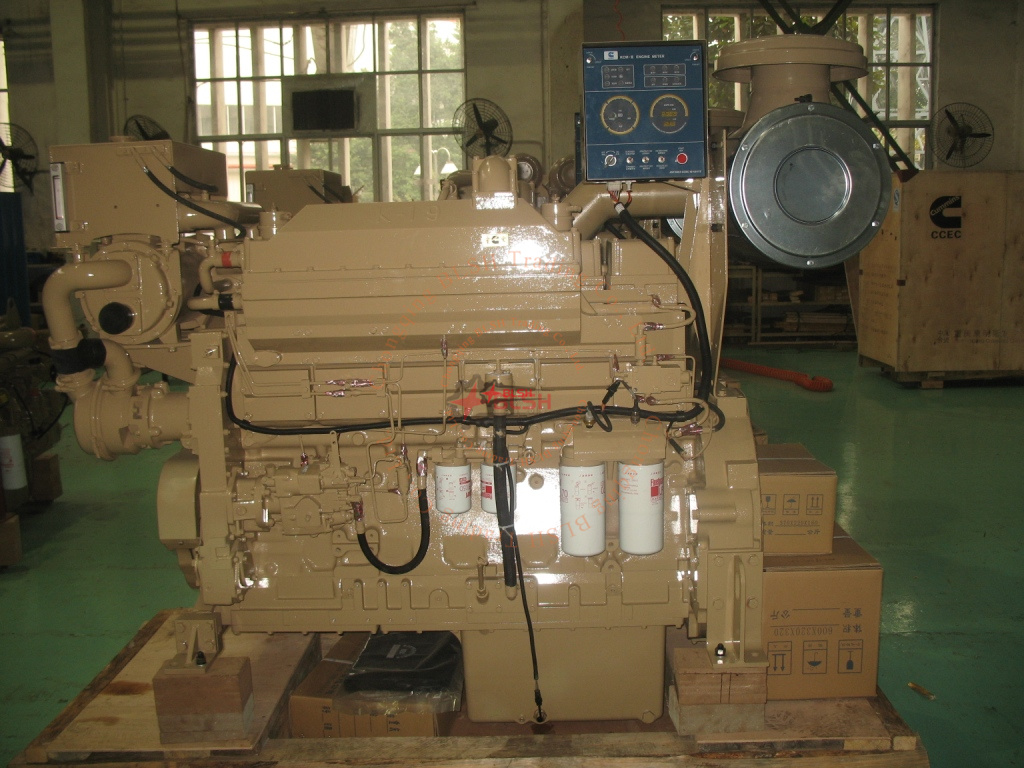
| Engine Model | KTA19 – M425 |
| Advertised Power | 317 kW (425 HP) @ 1800 RPM |
| Compression Ratio | 14.5 : 1 |
| Type | 4 Cycle; 6 Cylinder |
| Fuel System | PT |
| Aspiration | Turbocharged & Aftercooled |
| Emission Standard | Euro II |
| Displacement | 14L |
| Bore * Stroke | 159 mm * 159 mm |
| Packing Size (L * W * H) | 1534 mm * 781 mm * 1355 mm |
General Infomation of CCEC KTA19 – M425 Marine Engine
| General Infomation of CCEC KTA19 – M425 Marine Main Engine | |||
| Engine Model | KTA19 – M425 | Configuration | D192063MX02 |
| Curve No. | M – 440 | CPL Code | 0219 |
| Displacement | 855 in3 / 14 L | Bore * Stroke | 140 mm * 152 mm / 5.50 in * 6.00 in |
| Fuel System | PT | Cylinders | 6, in Line |
| Advertised Power | 317 kW (425 HP) @ 1800 RPM | Aspiration | Turbocharged |
| Rating Type | Continuous | Peak Engine Torque @ 1500 RPM | 1365 lb.ft / 1851 N.m |
| Brake Mean Effective Pressure | 161 PSI / 1112 kPa | Minimum Idle Speed Setting | 675 – 725 RPM |
| Normal Idle Speed Variation | ± 25 RPM | High Idle Speed Range Minimum | 2025 RPM |
| High Idle Speed Range Maximum | 2106 RPM | Compression Ratio | 15.5 : 1 |
| Piston Speed | 1870 ft/min / 9.5 m/sec | Weight (Dry) – Engine Only – Average | 3599 lb. / 1634 kg |
| Weight (Dry) – Engine With Heat Exchanger System – Average | 3998 lb. / 1815 kg | Installation Diagram No | 4914568 |
Scopes of Supply CCEC KTA19 – M425 Marine Engine
| Scopes of Supply of CCEC KTA19 – M425 Marine Main Engine | |||
| Exhaust System | 1. Silencer | Lubricating System | 1. Oil Pump |
| 2. Bellows | 2. Oil Filter | ||
| Fuel System | 1. Fuel Pump | Starting System | 1. Starter Motor |
| 2. Oil Cut Solenoid Valve | 2. Fywheel Housing | ||
| 3. Fuel Filter | 3. Flywheel | ||
| Charging System | 1. Alternator | Control System | 1.Stadnby Control Panel |
| Cooling System | 1. Seawater Pump | ||
| 2. Heat Exchanger | |||
System Technical Data of CCEC KTA19 – M425 Marine Engine
| System Technical Data of CCEC KTA19 – M425 Marine Main Engine | ||
| Fuel System | Fuel Consumption at Rated Speed | 21 GAL/hr / 79 L/hr |
| Approximate Fuel Flow to Pump | 63 GAL/hr / 237 L/hr | |
| Maximum Allowable Fuel Supply to Pump Temperature | 160 °F / 71 °C | |
| Approximate Fuel Flow Return to Tank Temperature | N / A | |
| Maximum Heat Rejection to Drain Fuel | N / A | |
| Fuel Pressure – Pump Out / Rail Mechanical Gauge | 155 PSI / 1068 kPa | |
| Air System | Intake Manifold Pressure | 34 in. Hg / 115 kPa |
| Intake Air Flow | 974 CFM / 460 L/sec | |
| Heat Rejection to Ambient | 2277 BTU/min / 40 kW | |
| Exhaust System | Exhaust Gas Flow | 2372 CFM / 1120 L/sec |
| Exhaust Gas Temperature (Turbine Out) | 871 °F / 466 °C | |
| Heat Rejection to Exhaust (Manifold) | 1141 °F / 616 °C | |
| Cooling System | Sea Water Pump Specifications | MAB 0.08.17 – 07 / 16 / 2001 |
| Pressure Cap Rating (With Heat Exchanger Option) | 7 PSI / 50 kPa | |
| Engines without Low Temperature Aftercooler (LTA) Jacket Water Aftercooled Engine (JWAC) | ||
| Coolant Flow to Engine Heat Exchanger | 120 GAL/min / 454 L/min | |
| Standard Thermostat Operating Range (Start to Open) | 180 °F / 82 °C | |
| Standard Thermostat Operating Range (Full Open) | 203 °F / 95 °C | |
| Heat Rejection to Engine Coolant3 | 14799 BTU/min / 260 kW | |
CCEC KTA19 – M425 Marine Engine Product Advantages
Excellent Durability
The cylinder block and head adopt high-strength integrated design, reducing failure rates. Durable and has earned an excellent reputation.
Outstanding Performance
Equipped with an advanced PT fuel system and ultra-high injection pressure, it features unique advantages such as overspeed protection, low-pressure fuel supply, fewer pipelines, and low failure rates. This ensures optimal fuel atomization and efficient combustion, delivering high energy-saving performance. The STC oil timing control valve precisely adjusts timing, improving combustion and reducing smoke emissions during low-idle conditions.
Exhaust System
Chongqing Cummins marine engines are designed with a rational exhaust system. The wet turbocharger and water-cooled exhaust pipes effectively reduce surface temperatures, complying with SOLAS safety regulations.
Easy Maintenance
Modular design with compact and integrated components. Parts are detachable with high reusability. Shared platform design ensures high parts commonality.
Emission Compliance
Compliant with IMO Tier II emission standards. Features a marine-optimized turbocharger and intercooler from Chongqing Cummins, paired with low-temperature intercooling technology. This enhances operational efficiency, reduces fuel consumption and emissions, and improves engine reliability.
Classification Society Certifications
Certified by multiple international classification societies, including CCS and BV.

